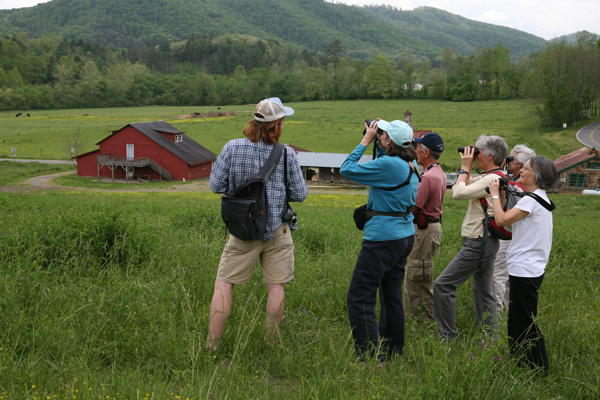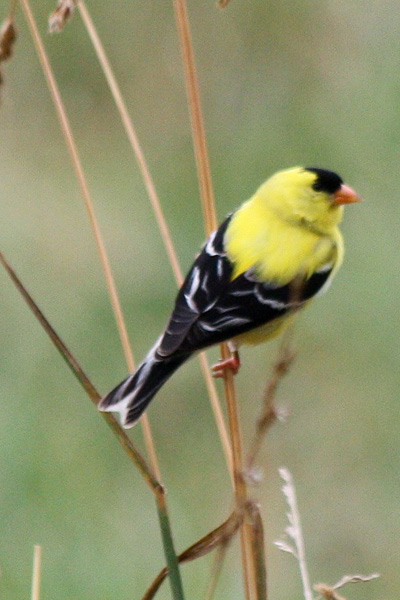
12 May Follow These Tweets! Birding at the Folk School
By Mary Whitmore
The Folk School’s campus, which for its size, is very rich in birdlife, is a perfect setting for “Birds of Southern Appalachia,” which I’ve co-taught for the past several years. From the purple martins, bluebirds, and tree swallows that make use of the birdhouses near Davidson Hall and Orchard House, to the eastern meadowlarks and red-winged blackbirds who canvass the school’s field for mates, to the cardinal, the Carolina wren, the brown thrasher, and the blue-grey gnatcatcher, who prefer creek-side living – the Folk School provides the beginning birder with a dizzying array of species to look at, listen to, and learn about.
Our class is usually just as diverse as the population of birds that share this campus with us: some students want to learn to recognize calls and songs, while others hope to improve their ability to identify birds by sight. Some are very good at spotting birds, while others aren’t the first to find a bird, but once they’ve seen it, are able to direct others to its location.
A day spent watching birds at the Folk School might easily yield a list of 50 species seen or heard. Inevitably, the sounds and sights of so many different kinds of birds begin to blur together for most students. As teachers, we don’t expect that everyone will learn to identify every bird by sight, or memorize every song we’ll hear during the week. Instead, our wish is that people leave the class feeling excited about watching birds when they get home, and also appreciating the marvelous adaptations that these amazing animals possess.
Members of our class learn that in the real estate business, it may be all about “location, location, location,” but in the world of bird-watching, it’s all about “habitat, habitat, habitat.” A morning spent at nearby Lake Chatuge underscores this fact. In addition to viewing various species we’ve seen earlier at the Folk School, we are treated with nice views of belted kingfishers, wood ducks, and rough-winged swallows near the water. The next day, in the mountains near Stecoah Gap, the treetops are alive with warblers, including black-and-whites, blackburnians, northern parulas, ovenbirds, black-throated greens, American redstarts, and black-throated blues. Like all of us, they’ve come from miles away to be at this place on this day. What brings them here is the availability of resources that they need to survive. For the warblers, those resources are shelter, water, space, and food – caterpillars, gnats, and other insects, to be exact. For the humans, it’s a bit more complicated. What’s brought us to the Folk School is the opportunity to learn, to create, to explore, to relax, to wonder, and to be inspired – not only by what we, ourselves, are able to do in the space of a single week but also by the talents and kindness of others with whom we share the experience. What pleasure, indeed!





No Comments